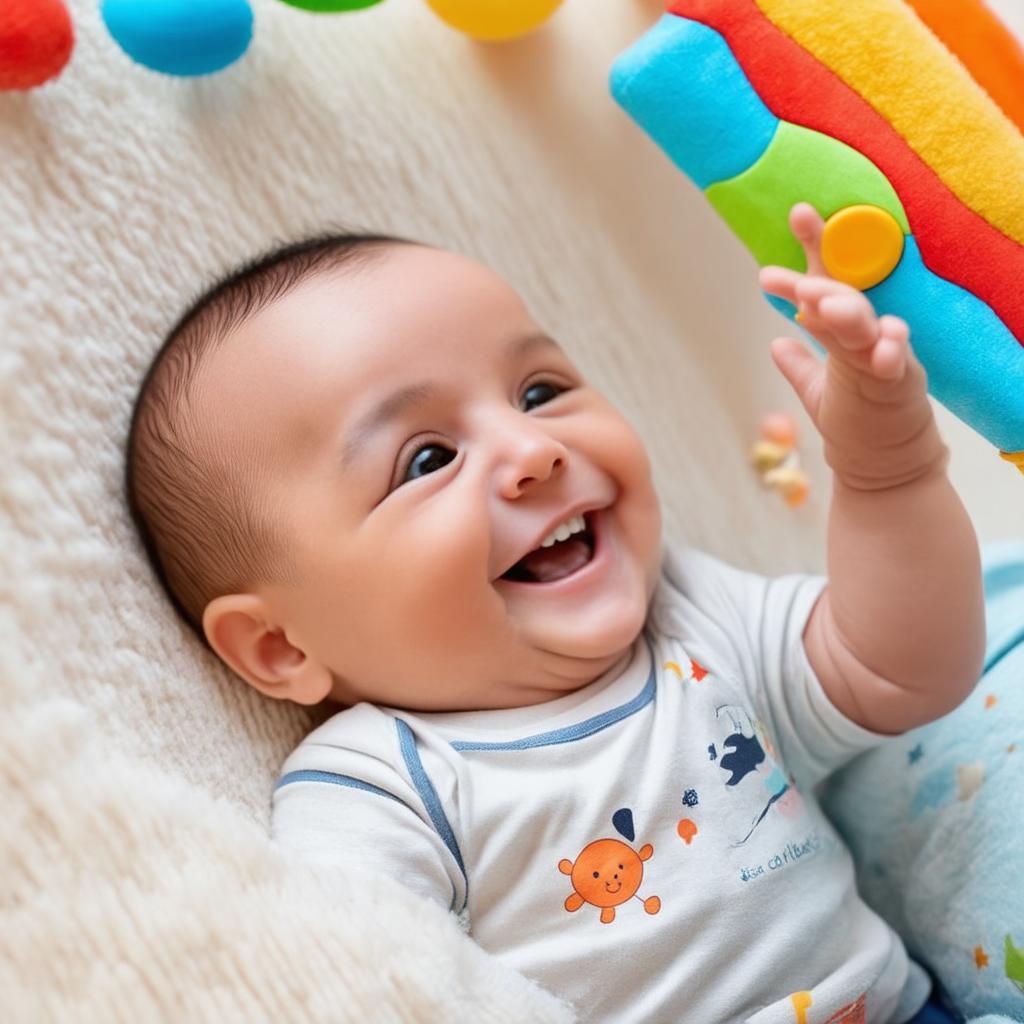[foxdark]
Physical Milestones:

- Holds head up for a few seconds at a time
- Lifts legs and arms at the same time
- Looks around at objects
- Starts to smile
- Grasps objects and brings them to mouth
- Can roll over from tummy to back
Cognitive Milestones:

- Recognizes familiar faces
- Reacts to sounds and voices
- Follows moving objects with eyes
- Explores the world by sucking, chewing, and touching everything
- Begins to babble and make vowel sounds
Social Milestones:

- Enjoys being held and cuddled
- Responds to social cues (e.g., smiles, laughter)
- Imitates facial expressions
- Shows interest in other people
Additional Signs of Progress:
- Sleeps for longer stretches (4-6 hours at a time)
- Feeds every 2-3 hours
- Begins to gain weight and grow in length
- Develops a regular bowel movement pattern
- Has regular check-ups with their pediatrician## 2 Month Old Baby Milestones Checklist
Executive Summary
Two-month-old babies take the world by storm with their growing personalities and newfound abilities. This checklist will provide parents and caregivers with a comprehensive guide to the developmental milestones that babies typically reach at this exciting age, including physical, social, cognitive, and linguistic progress. Understanding these milestones helps optimize support and nurture each baby’s unique journey.
Introduction
As newborns transform into two-month-olds, their development accelerates at an astonishing pace. From improved head control to interactive smiles, these milestones mark a remarkable transformation in their little lives. This checklist serves as a reliable guide, helping parents and caregivers monitor their baby’s progress and celebrate each triumph along the way.
FAQs
How can I encourage my baby’s physical development?
- Tummy time: Supervised time on the stomach strengthens neck and shoulder muscles.
- Baby massage: Gentle strokes promote relaxation and enhance body awareness.
- Active play: Engage your baby in age-appropriate games like peek-a-boo to stimulate motor skills.
When should I expect my baby to start cooing?
- Cooing typically begins around 6-8 weeks. Encourage vocalization by talking, singing, and making eye contact.
How do I know if my baby is tracking objects with their eyes?
- Offer high-contrast toys or objects of interest to capture your baby’s gaze. Observe if they follow the movement with their eyes.
Physical Development
- Head Control: Hold your baby upright, supporting their head. They should hold their head steady for brief periods.
- Neck Strength: Lay your baby on their tummy for short periods of supervised “tummy time.” They should lift their head and chest off the ground.
- Hand-Eye Coordination: Place toys or objects within your baby’s reach. They should start to reach and grasp for them.
- Rolling Over: At this age, babies may begin to roll from tummy to back or vice versa.
Social and Emotional Development
- Smiles: Babies at two months of age start smiling in response to interaction and familiar faces.
- Eye Contact: They engage in prolonged periods of eye contact, establishing a connection and fostering emotional bonding.
- Laughter: Responding to funny noises or tickles, babies may express laughter, demonstrating their growing sense of humor.
- Stranger Anxiety: As babies become more aware of their surroundings, they may start showing signs of stranger anxiety.
Cognitive Development
- Object Permanence: Babies begin to understand that objects continue to exist even when they can’t see them.
- Cause and Effect: They start to learn about cause-and-effect relationships by observing actions and their consequences.
- Memory: They can remember events and people who are familiar to them, showing signs of developing memory skills.
Linguistic Development
- Cooing: Around 6-8 weeks, babies start to make vowel sounds and other vocal noises, known as cooing.
- Babble: They begin to string together vowel and consonant sounds, forming a rudimentary form of babbling.
- Imitation: Babies may attempt to imitate sounds they hear, such as coos or vowel sounds from caregivers.
Conclusion
Navigating the journey of a two-month-old baby is filled with moments of wonder and discovery. This checklist provides a roadmap, helping families celebrate the milestones their little ones achieve. Every coo, smile, and head lift marks a triumphant step in their development. As they continue to grow and explore, parents and caregivers play a crucial role in nurturing their physical, social, cognitive, and linguistic abilities, fostering a foundation for a happy and healthy future.
Relevant Keyword Tags
- 2 Month Old Baby Milestones
- Physical Development 2 Month Old
- Social Development 2 Month Old
- Cognitive Development 2 Month Old
- Linguistic Development 2 Month Old
